I read a lot of books but this month – wow, I’ve read a lot of books. I’m saying that with some shame because, surely, I could / should have been doing some other things with that time? Unlike January or February, when I’ll happily embrace hermit mode, April was a sociable month. I’m putting the number down to some longer train journeys and a change in habit: April’s good weather encouraged me to read outside on my lunchbreak and – a favourite warmer weather habit – after work, too.
Linked, probably, is that after a few months of feeling despondent about my TBR challenge, I got through five of my languishing non-fiction books, which spurred me to on read more. Here’s the full list of what I read this month: I’ve put stars by my favourite five.
Cod: A Biography of the Fish That Changed the World by Mark Kurlansky
Perspectives by Laurent Binet
To the River by Olivia Laing (audiobook)
*The Unconsoled by Kazuo Ishiguro
The Lost Pilots: The Spectacular Rise and Scandalous Fall of Aviation's Golden Couple by Corey Mead
*Brief Lives by Anita Brookner
*A Spring of Love by Celia Dale
Rebel Writers: The Accidental Feminists by Celia Brayfield
Let me tell you about a man I knew by Susan Fletcher
Chinese Parents Don't Say I Love You by Candice Chung
The New Look: A Social History of the Forties and Fifties by Harry Hopkins
*Peter Hujar's Day by Linda Rosenkratz
Plain Girl by Arthur Miller
The Last Days of Roger Federer: And Other Endings by Geoff Dyer (audiobook)
Striptease: The Untold History of the Girlie Show by Rachel Shteir
*Nova Scotia House by Charlie Porter
Memory lane
The Unconsoled by Kazuo Ishiguro
When I first moved to London, when I had very little cash and knew even less people, I spent a lot of time in a local second-hand bookshop. The kind that’s brilliant for people whose main currency is time, an assault course of books. Kazuo Ishiguro was one of the authors who appeared among their piles a lot and I worked my way through most of his back catalogue, subsequently buying Never Let Me Go when it was first released, as new. But I somehow missed (or was too intimidated by) The Unconsoled, so when it came up as a Backlisted pick.
I decided to plug that gap. It centres on Ryder, who’s in a strange mitteleuropa town for a performance. But people are always bothering him for other favours, so he’s constantly pulled off task. The novel follows a dream logic, and has that same stressful and disorientating, vividness of dress. Continually frustrating but also very funny, it reminded me of what a supreme pro Ishiguro is, and made me want to revisit the rest of his backlist.
(If you’ve read the book, you may appreciate the nod to its plot in that my photo was taken on the train. Alas, no breakfast buffet on this one, however.)
(… but an extravagant – non-plot-related pastry in this photo, mainly included to show of the dream book + sunshine + baked goods combo).
Perspectives by Laurent Binet
Since we’re on memory lane, Perspectives had me casting even further back, to university and History of Art 1 and anything I could recall about Vasari and Mannerism. This is an epistolary murder mystery set in 16th-century Florence, using Vasari and many other art history stars. But while some background knowledge helps a bit, Binet gleefully leaves the truth behind. It made me laugh a lot and was a fun palate cleanser after the heavier stuff I’ve been reading. However, given its highbrow set-up, I took it on a very shallow level. I discovered what great fun Binet is in interviews, such as on the Hatchards podcast, and perhaps enjoyed listening to these as much as I did the book itself.
This month’s Brookner, and women looking for love
Published in 1990, this feels part of a Brookner golden period, coming on the heels of Latecomers (the novel that started me on my Brookner-a-month mission) and Lewis Percy, which I read last month. Sometimes Brookner’s heroines feel they’re swimming against the tide of their times. Fay, here, feels exactly a product of her time: brought up with the expectation of marriage, and that’ll bring her both obligation and love. She dutifully marries, putting her in contact – and in contrast to – another woman, Julia. In Julia, the lessons of femininity have been learned in a different way. She’s beautiful, expectant of worship and care, with nothing to fall back on but gossip.
Fay is the solitary woman that Brookner is so good at, capturing those moments of intense loneliness – but also sometimes the pleasure that can be found on a sunny day, spent by yourself, wandering a city. She’s not entirely adrift, like some of them can be: she has a reliable, capable female friend, and learns to find some fulfilment through voluntary work. Fay herself says she aspires to a normality; in fact, it’s her apparent ‘normality’ that makes her loneliness feel even more painful.
A Spring of Love by Celia Dale
Brookner’s Fay is the daughter of a cinema manager in Camberwell; Evelyn – the heroine of A Spring of Love – is the grand-daughter of a shopkeeper in Camden. Evelyn, like Fay, is dutiful and capable and shares her deep longing for love. Into Evelyn’s well-ordered life of routine and simple pleasures comes Raymond, seemingly offering Evelyn all she’s longed for and never dared voice. Dale brilliantly builds a feeling of unease. Like Evelyn, we aren’t witness to the full truth until it’s too late, second guessing what’s going on, and how worried we really should be… Trying a Celia Dale was one of my year’s reading ambitions – thanks Sian for giving this one to me – and now I just want to read more.
Life and art and more
Let me tell you about a man I knew by Susan Fletcher
I was lent this after visiting the National Gallery’s Van Gogh exhibition. It imagines Van Gogh’s time in the asylum at Saint-Rémy-de-Provence, and the origin of his portrait of Jeanne Trabuc, the warden’s wife. So, perhaps the pacing and tone are a little one note, and I suspect I’ll remember little about it in a few months. And, thanks to Van Gogh being such a prolific letter writer, he’s someone whom we have a fair idea of how he expressed himself, it’s maybe not that convincingly reflected here… However, it’s extremely readable (I read it in a day) and has brilliant reviews online, so go for it, if you like the premise.
Nova Scotia House by Charlie Porter
Bought new, because people kept recommending it to me, and the library didn’t have it. I loved both of Porter’s non-fiction books, so was intrigued about his first fiction. Nova Scotia House has an immediacy that blurs past and present as Johnny looks back on the life and death of his lover, Jerry, from an AIDS related illness two decades on. The death bit is devastating but the life bit is equally important, as Johnny attempts to find a way to live that continues Jerry’s principles. It questions how gay / alternative communities might be rebuilt after such destruction, what alternative ways there could be, while letting you feel the layers of loss, the weight survivors carry, the supreme cruelty of it all.
Sometimes his characters do seem to fall into talking as manifesto, but it skilfully conjures place – housing estates, pubs, saunas. (Porter writes about his places for World of Interiors, here.) There’s a point that the text just stops, replaced by photos of real panels from the UK AIDS memorial quilt – thanks to Porter’s initiative the Quilt will be going on display at Tate Modern in June.
Keeping things brief
Peter Hujar's Day by Linda Rosenkratz
One of my highlights from Raven Row’s recent Peter Hujar exhibition was a series of rooms showing the photographs Hujar took over the course of one day, Easter Sunday, 18 April 1976. He begins among the worshippers at St Patrick’s Cathedral in midtown, moves down to the cruising piers along the Hudson, and finishes up on the World Trade Center viewing platform on the tip of Manhattan. Who wouldn’t want to spend a day like that, with such a generous, observant guide to people and place? What pleasure, then, to discover that I could spend another day with Peter Hujar with the book Peter Hujar’s Day, thanks to Daisy Buchanan’s recommendation on the Book Club Review podcast.
The book focuses on an earlier day in his life – 18 December 1974 – when Linda Rosenkratz asked him to record his activities and relay them to her in a phone conversation. This is much more of a working day – an editor from French Elle comes to Hujar’s home / studio, then he heads to the Lower East Side to photograph Allen Ginsberg for the New York Times. Hujar’s ‘read’ on Ginsberg is fascinating, indicating his understanding of human psychology that probably made him such a good portraitist (but also if you’ve – like me – recently seen Ginsberg pop up in the One-to-One: John & Yoko film, in footage from a few years earlier). But Hujar just seems like someone who it’d always be enjoyable to chew the fat with, who’d always find something interesting to report from even the most average workaday day. Read it in the morning, then go for your own city walk.
Another factor in the book total this month: short books. Thank you to Sara for sending me this novella. Janice, waking up next to her dead partner, recalls moments from her life that led her there. She’s someone in love with art and beauty – however, as the title suggests, her own personal appearance, we’re told, is plain. While that might feel a negligible issue, it’s one that matters to Janice (and presumably Miller). I enjoyed this most as a portrait of 1940s New York, from someone who was there, and has the skill to distil its essence.
A baggier affair
The Last Days of Roger Federer: And Other Endings by Geoff Dyer (audiobook)
This is about all sorts of endings: finishing – or not finishing – books, ‘last chances’, physical deterioration, late phases. I was favourably inclined from the outset, thanks to his use of a choice Anita Brookner epigraph. Dyer refers to a few more of my literary faves along the way – Jean Rhys, Eve Babitz – as well as lots of things I’m largely indifferent to, such as Nietzsche or tennis, and some things that I never expected to have to form an opinion on, like his (thwarted by the pandemic) aim of never buying shampoo again, furnishing himself from hotels instead. Reading reviews, there’s lot of criticism of its rambling nature, but – divided into very short chapters – the structure suited to the way I listen, in snatches on a walk or the bus and, in each chapter, I’d always find something that made me think or laugh… or roll my eyes.
For transporting yourself to an English summer’s day…
To the River by Olivia Laing (audiobook)
I saw Laing speak about The Garden Against Time, and they specifically mentioned language: how The Garden Against Time was their first book to deliberately employ lusher language since To the River. Listening, it’s impossible not to hear the sensual, squelchy liquidity of the prose, following Laing walking the length of the Ouse. The walk takes place around midsummer and the whole thing seems to shimmer in that magic (the listening experience enhanced by also taking place in the sunshine). It pulls in nature, local histories, myth and industry. There’s a lot about Virginia Woolf too, the Ouse being where she died, and Laing moves Woolf away from her sometimes virginal images, reinstating her sensuality. For places that I’m reasonably familiar with, it makes you want to stride out and explore for yourself, scratch the surface a little deeper. It’s also interesting seeing earlier echoes of some of the concerns of The Garden Against Time here: the depictions of the plant life, the private ownership of the landscape.
For making yourself very hungry
Chinese Parents Don't Say I Love You by Candice Chung
Published by Elliott & Thompson in April, I was sent this to look at for my day job, but it became a book that moved from the ‘work’ category and into ‘pleasure’. Chung is a food writer, and food and meals are a major theme in this memoir. Do not read it when hungry! Although partly about her relationship with her parents, as the title suggests, it’s as much about the rebuilding that takes place after the end of one romantic relationship, and the hard, hopeful leaps of embarking on a new one. Warm and tender and all round delicious.
The non-fiction TBR progress report
Cod: A Biography of the Fish That Changed the World by Mark Kurlansky (approx. time on shelves 18 months)
My boss lent me this, I think because we were talking about books that kick-started publishing trends. Anyway, when this came out in the mid-90s and was hugely successful, it inspired countless more quirky, one-topic non-fiction books. This is part how cod changed the world, part recipe book. I grew up in Grimsby – a port once made wealthy through cod fishing – and remember the lingering resentment towards Iceland (the country, not the shop) for that trade being wiped out in the ‘Cod Wars’. That's all succinctly explained in here, without the bonus resentment and without making my eyes glaze over as they did when it was recounted to me as a kid. Zippy and surprisingly engrossing, given its subject matter.
The Lost Pilots: The Spectacular Rise and Scandalous Fall of Aviation's Golden Couple by Corey Mead (approx. time on shelf: 7 years)
I’ve almost cleared this book out many times but the fact it’s about one of my favourite topics – the golden age of aviation – as well as being reasonably short meant I never could quite do it. It’s the true stories of pilots Jessie Miller and Bill Lancaster. It’s got record-breaking flights, romance and even a murder trial, but despite those rich ingredients it doesn’t quite take off. It’d have been better as a long article, rather than a book – but, whoosh, it’s finally off my shelves.
Rebel Writers: The Accidental Feminists by Celia Brayfield (approx. time on shelf: 7 years)
While the 1950s was known for its ‘Angry Young Men’, this profiles women writers of the period who also had something to say: Nell Dunn, Shelagh Delaney, Edna O’Brien, Lynne Reid Banks, Charlotte Bingham, Virginia Ironside and Margaret Forster. That’s a great list of writers. But it’s not entirely clear why she’s picked these seven over others. She mentions, but dismisses, Margaret Drabble for example. Then what about someone like Ann Quin, just off the top of my head? While the structure of the book doesn’t work in its favour – plot points are recapped several times over – it did make me want to read or revisit all these authors. I dipped back into Nell Dunn’s always fascinating 1964 Talking to Women, which includes an interview with O’Brien. And then there’s Blue Road, the marvellous Edna O’Brien documentary, which I watched this month, which really makes the case – in a way Rebel Writers never quite does with such clarity – for her rebel writer status.
The New Look: A Social History of the Forties and Fifties by Harry Hopkins (time on shelf: six months)
I acquired this because of its name and great cover. Dior’s New Look does get a look in, but it’s just one aspect of this ambitious book covering the personal and political in Britain in the 1940s and ‘50s. It came out in 1964, so a lot closer to the time period than we are now – when it got a near rave review in the New York Times. Though he’s an enjoyable narrator, not all Hopkins’ pronouncements have held up. For example, his proclamation that “in the old battle of ‘Women’s Rights’ little remained but mopping up operations.” The book is best at some of the smaller details that have more likely faded from view from our vantage point: the introduction of ballpoint pens, UFO crazes, the fact that in the 1950s more British households had budgies as pets than dogs. It’d be a goldmine for someone wanting to set a novel in the period.
Striptease: The Untold History of the Girlie Show by Rachel Shteir (Time on shelf: about a decade?)
Apologies to my friend’s old flatmate who lent me this and I never got around to reading it… until now, when friend and former flatmate are no longer in touch. Published by Oxford University Press, it’s academic – footnotes aplenty. Fair play to Shteir, as she does make it accessible for a general reader and makes a convincing case for the striptease being a great American art form. I appreciate the research involved (and if I were a NYC tour guide / historical novelist, I’d take so many notes from this) but it’s not the kind of book you race through – nor is it particularly racey, if that’s what you’re after.
The books I bought this month:
I held out for most of the month, except for picking upChange by Maureen Duffy from a charity shop, after enjoying Capital last year, and seeing this one was set in the Second World War (like the 1920s, a big reading tick for me, though I’ve since learnt at least part of it is narrated by monkeys). Then, because I was doing so well on my targets, I bought Nova Scotia House (see above) and let myself visit the Amnesty bookshop in Kentish Town. I came away with No Modernism Without Lesbians by Diana Souhamiand Come Back in September by Darryl Pinckney: both non-fiction, but on my sprawling reading wishlist for a long time.
Other things:
I’ve been clicking away on this map of descriptions of London by non-English speaking writers (then getting frustrated by the books mentioned not being available in English and my own terrible foreign language skills).
However, my main clicking focus has been my library reservations. I’ve such promising books on order, I keep refreshing hourly in the hope one might be ready waiting for me…
What’s been the best thing that you’ve read this month? How many books is too many books? And what are you looking forward to picking up next?
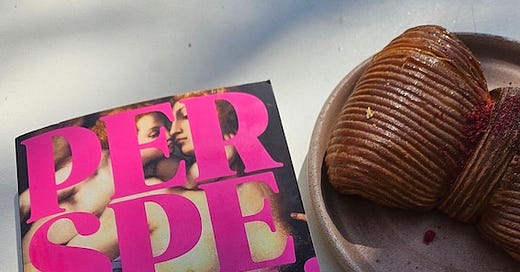


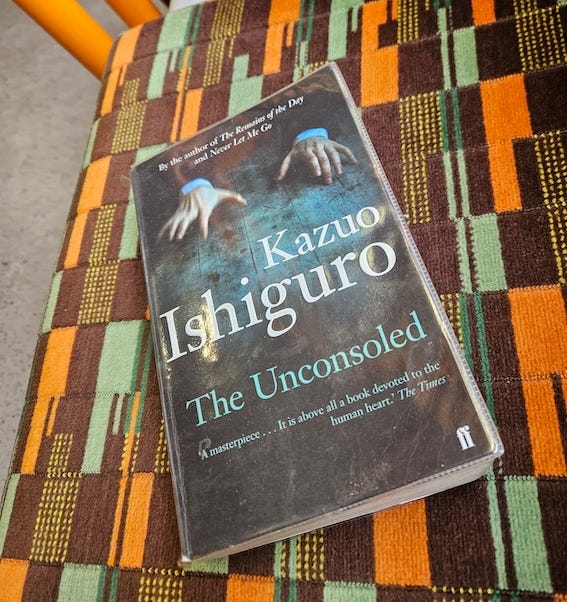
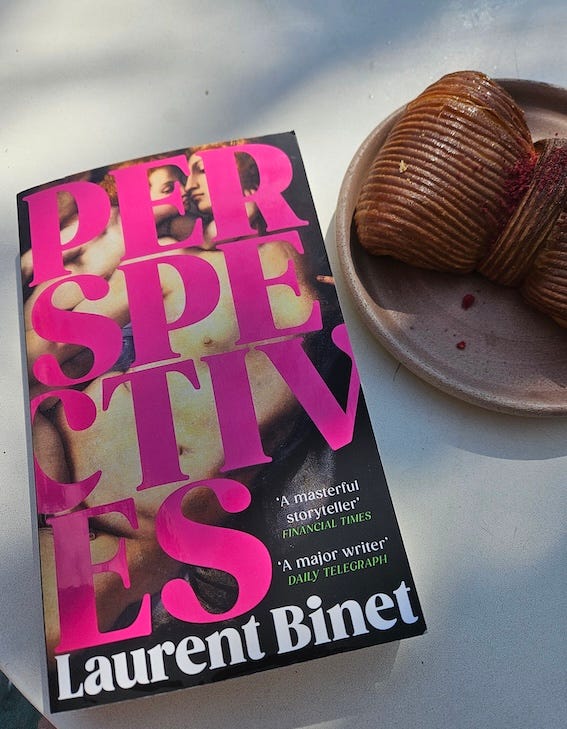
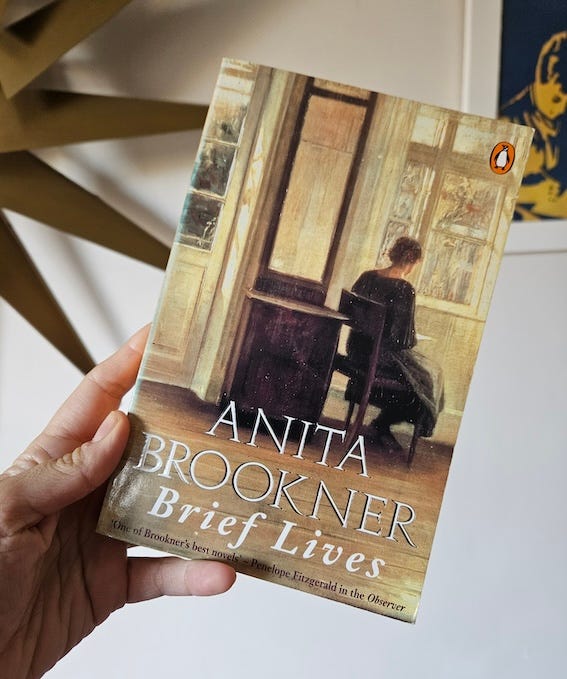
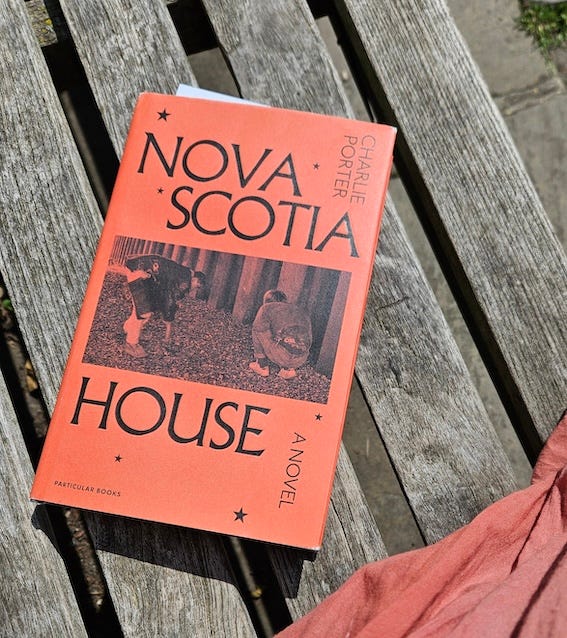
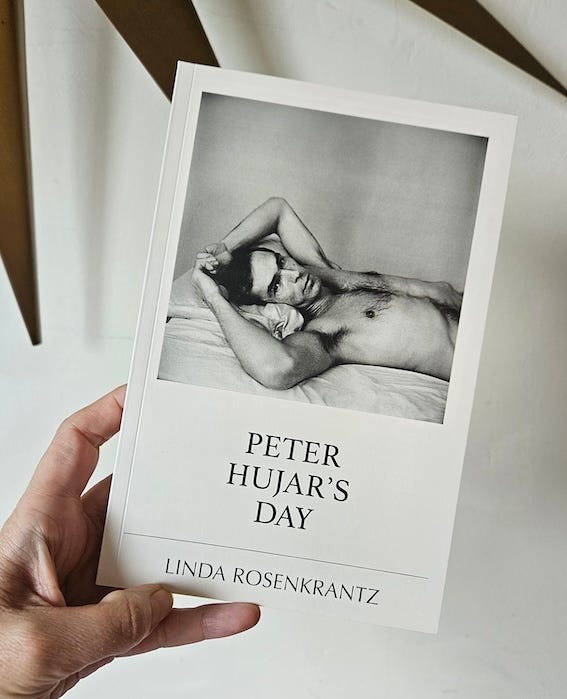

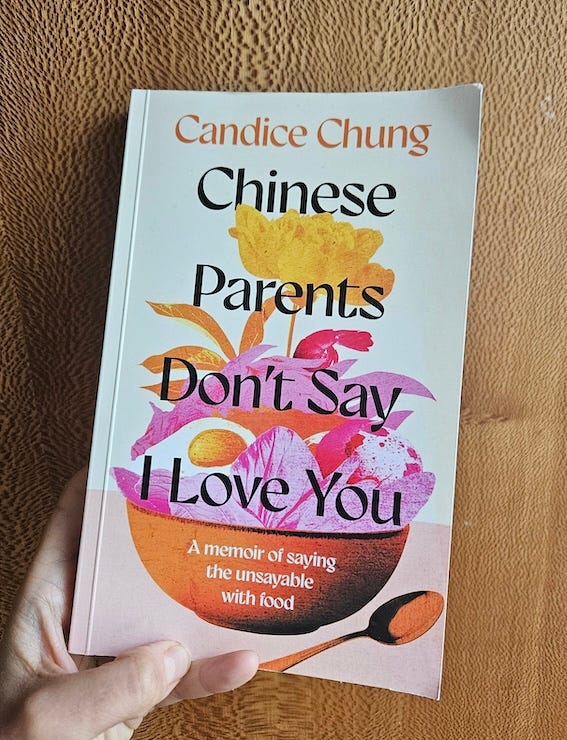
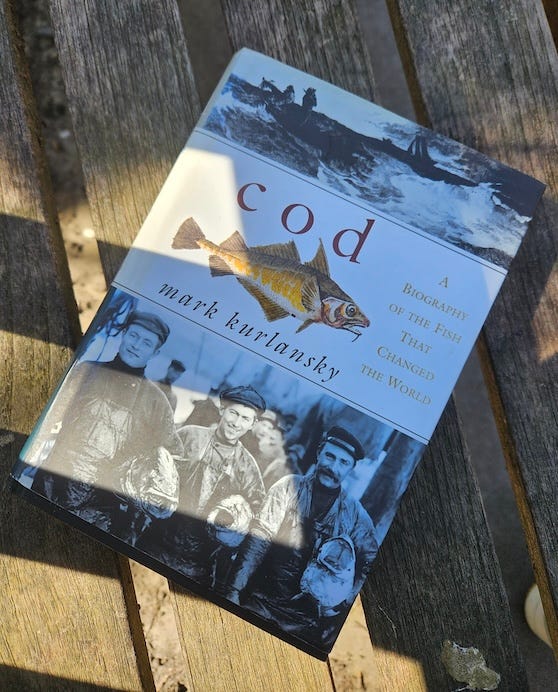
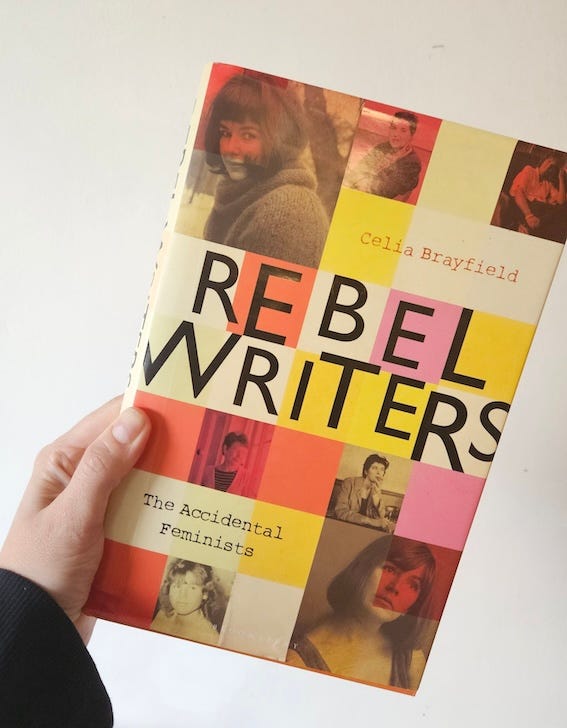
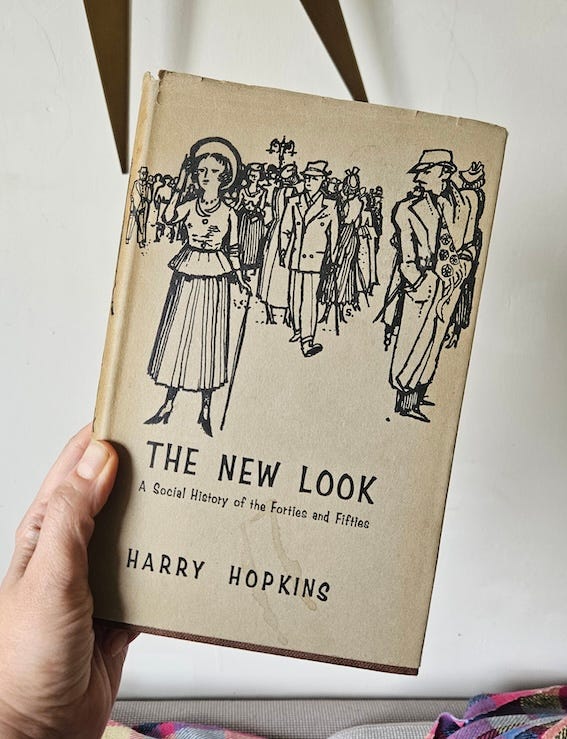

Enjoy being able to tell your reading adventures from the pastries in your photos! Glad you enjoyed the book. I read James last month - largely because you were so emphatic about it in an earlier issue! What a great book.
Amazing what some train journeys and shorter books can do! I also had a bumper reading month for similar reasons. I absolutely loved Shy Creatures by Clare Chambers this month: she's so good on love and disappointment and people trying their best but getting it wrong.